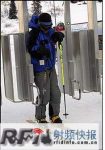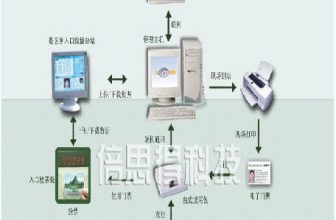
Alta ski resort in Utah, U.S. uses RFID technology for ticket management
[ad_1]
Anyone who has been to the Alta ski resort in Utah during the 2007-2008 season will praise the “advanced” or “high-tech” skis, but few people will compliment the operation of the ski resort. At that time, the admission tickets for ski resorts were all low-tech color-coded labels, and the ticket inspectors were well-known to open one eye and close one eye, which made many people take advantage of the loopholes. They would get used or forged tickets. Even without a ticket, the order of the ski resort is very chaotic as a result.
But this situation will never happen again. Alta’s chief financial officer and project leader, Michael Maughan, has installed RFID systems for ski resort tickets and entrances and exits. At an RFID innovation conference attended by 125 people, many people said that this is the best thing Alta Ski Resort has ever done.
Such a high praise is still a bit unexpected for Maughan, because some time ago, some customers who like to be provocative objected to the installation of this system, saying that this system will make the ski resort look more like a business and lose the sense of comfort. But since skiing last winter, those customers have admitted that they were wrong and liked the technology.

When Alta started to modernize the ski resort ticket technology and configure the entry system, it weighed the pros and cons of all technologies. Although barcode tickets have less investment, RFID tickets will bring more value to skiers, such as convenient services, orderly skiing grounds, and efficient operations.
Maughan said that RFID is more reliable and safer than bar codes in performance. In a skiing environment, barcodes may be damaged, dirty or soaked and difficult to read, but Maughan and his team found that: RFID tickets use either an employee’s hand-held reader or a fixed reader installed at the automatic revolving door. Both can be read quickly and reliably in a skiing environment.
Maughan said that another big advantage of RFID cards over barcode technology is that they can be read far away from skiers. Many customers say that this system is more convenient and easy to use than bar code systems.
The third advantage provided by RFID is the convenience for season pass holders. Pass holders usually have hard plastic cards hanging in their pockets or around their necks. Because this card uses RFID technology, skiers don’t have to take out the pass from the pockets of several layers of clothes to check the ticket, but can read it directly. Especially in snowy weather, the advantages of this card are more obvious.
In addition, skiers can keep this RFID card and add additional value to this card through the Internet Web interface to continue using it.
Two solution providers, Skidata and Axess, both headquartered in Australia, deployed this project for Alta. Maughan said that Alta chose Axess for two main reasons: First, Axess provides background software that can control RFID access control and connect tag data to ski resort sales terminals. Alta provides a double ski resort channel that can reach Alta and the nearby Snowbird ski resort at the same time. Alta hopes that this back-end software can be combined with the latter’s ticketing system.
The second is that Axess customized the entry system for Alta instead of using revolving doors. This customized Axess system includes a mobile gate that resembles a horse-racing start gate, once a reader installed at the gate reads the tag, allowing skiers to pass through. Alta also asked Axess to build two vertical antennas on each door. This will ensure that RFID tickets can be read no matter which side of the skier’s body, waist or neck.
Because the amount of snowfall in Alta Ski Resort is generally relatively large, the third heavy snow measured in 70 years is more than 700 inches, so the door of the ski resort must be easily lifted and moved to adapt to the growing season. And ensure that the snow plow can pass under the snow. Axess worked with Alta’s business team to design and install the ski gates.
In addition, Alta uses a thinner, more durable plastic RFID ticket card, which can be kept and used multiple times, requiring a payment of $59 on the first day of use. The card is embedded with an HF 13.56 MHz passive RFID tag that complies with the ISO 15693 standard, and contains a unique ID number.
On the second day of skiing, skiers can take the card back to the ticket office and pay $54. Users can also select the desired date on Alta’s website, enter the payment information and the ID number printed on the card to update the card. After receiving the payment, the software that controls the gate enters the ID number into the database.
A barcode is also printed on each card, and the ID number on it is the same as that on the card. This card can be used in Alta or Snowbird ski resort, in the latter, ticket inspectors generally use a handheld barcode scanner to read the tickets.
In addition, Alta has also strengthened cooperation with nearby hotels that sell ski tickets and RFID printer-encoders.
The number of ticket gates in ski resorts is now greatly reduced. If the tag is read during the season, the holder’s photo, name and other information such as the postal code will appear on the small monitor with a handheld reader. Ticket inspectors can use this information to identify skiers.
Maughan said that this RFID ski ticket has improved the work efficiency of ticket inspectors. Although it has not been determined whether this ticket will increase the income of ski resorts, it is certain that customer satisfaction is constantly improving.
[ad_2]




